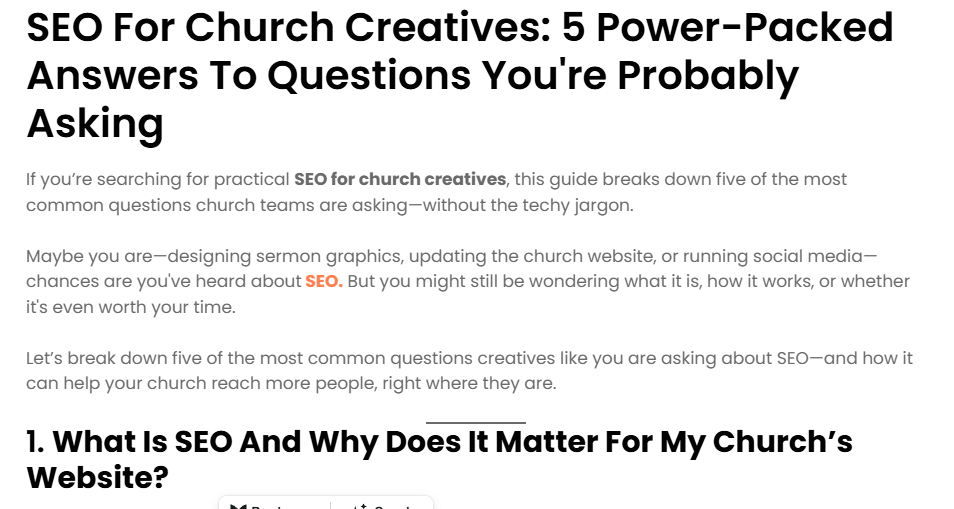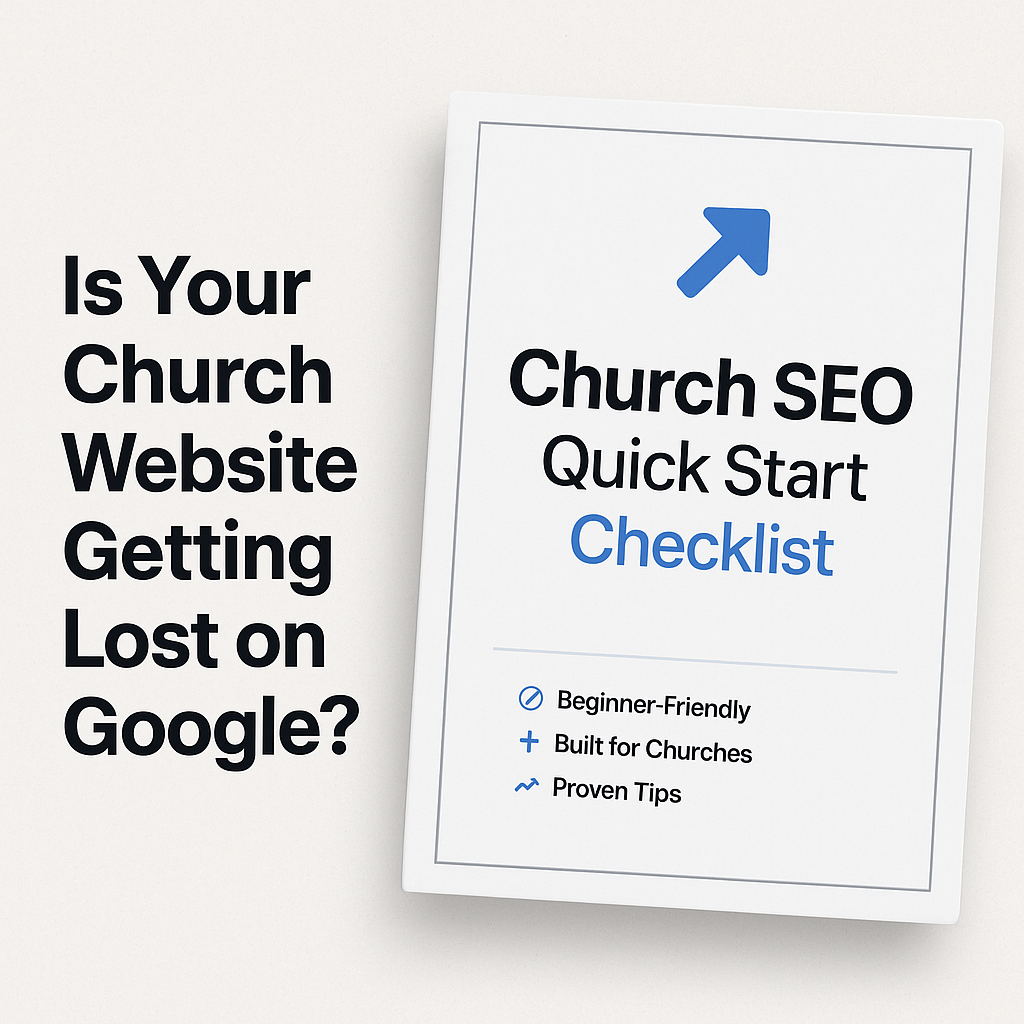If you’re searching for practical SEO for church creatives, this guide breaks down five of the most common questions church teams are asking—without the techy jargon.

Maybe you are—designing sermon graphics, updating the church website, or running social media—chances are you've heard about SEO.
But you might still be wondering what it is, how it works, or whether it's even worth your time.
Let’s break down five of the most common questions creatives like you are asking about SEO—and how it can help your church reach more people, right where they are.
1. What is SEO and why does it matter for my church’s website?
SEO stands for Search Engine Optimization. It’s the process of improving your website so that it shows up in search results on platforms like Google.
Think about this: when someone searches “church near me,” “youth Bible study San Francisco,” or “free rehab center with spiritual support,” your church could be the answer they find—if your site is optimized.
SEO helps your church be discoverable by the people who need hope, healing, and community—right now.
🧠 Pro Tip:
SEO isn't just for big brands or businesses—it’s digital evangelism. Showing up on Google might be your first conversation with someone who’s been looking for an answer.
2. How can SEO help us reach more people in our city?
Local SEO is how churches show up in local search results—those searches that end in “near me” or include your city name.
By optimizing your Google Business Profile, using city-specific keywords, and adding location info to your site (like your address, service times, or neighborhood names), you increase your chances of reaching people looking for a church in your area.
People are already searching—SEO just helps them find you.
🧠 Pro Tip:
Make sure your church is listed on Google Maps and has up-to-date hours, photos, and service descriptions. It’s free—and one of the most powerful SEO tools available.
3. What’s the difference between on-page and off-page SEO?
Great question. Here’s a simple breakdown:
- On-Page SEO is everything on your website: keywords, page titles, images, blog content, and even how fast your site loads.
- Off-Page SEO is what’s happening off your site: backlinks (when other sites link to you), social shares, and online reputation (like Google reviews).
Both matter—but most churches can start with on-page SEO and see major improvements.
🧠 Pro Tip:
Start by optimizing your homepage and service pages with clear titles, keywords like “Christian church in [your city],” and inviting content. One step at a time makes a big difference.
4. Do I need to know coding to improve our SEO?
Nope. While technical SEO exists, most impactful changes don’t require any coding knowledge. If you can update text on your site, rename image files, and install basic plugins (like SEO tools on WordPress or Shopify), you’re already 90% of the way there.
There are also drag-and-drop SEO checklists, YouTube tutorials, and even tools like ChatGPT that can guide you step-by-step.
🧠 Pro Tip:
Install an SEO plugin like Yoast (for WordPress) or SEOPress—it will walk you through each page and tell you what to fix (in plain English).
I use SEOpress to optimize my websites for SEO.
5. How long does it take to see results from SEO?
Here’s the real talk: SEO is a long game—not a quick fix.
It usually takes 2–6 months to start seeing noticeable changes, depending on your content, competition, and how consistent you are. But the results are compound—meaning the more you do, the more your reach grows over time.
Think of it like sowing seeds—faithfully tending them each week until the harvest comes.
🧠 Pro Tip:
Track progress using Google Search Console. It’s free, and it shows you what keywords are bringing traffic and what pages are being clicked.
If you have questions, please type them in the comment section. I would love to assist where I can.
 Simple SEO wins you can do in 10 minutes
Simple SEO wins you can do in 10 minutes